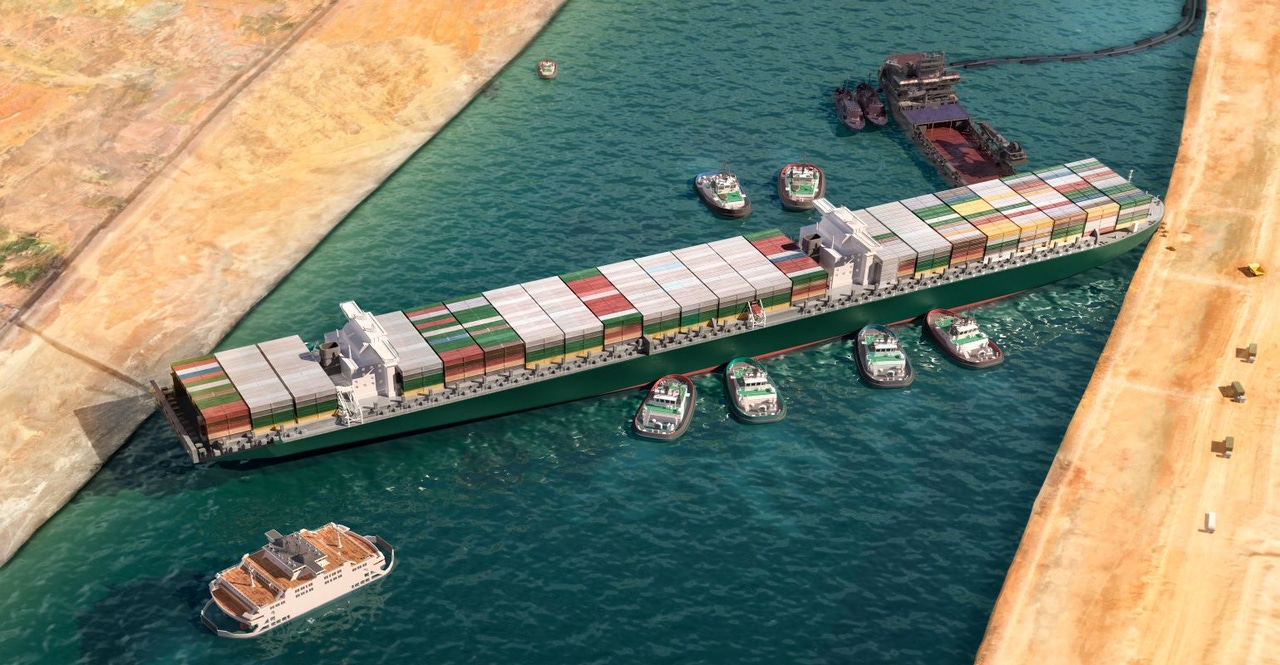Supply chains halted by more than just COVID
COVID-related shutdowns hit supply chains hard, but that didn't mean other forms of disruption suddenly hit pause.

For more than a year, the COVID-19 pandemic has cast a shadow on nearly all areas of life—with global supply chains chief among them. At the pandemic’s onset, consumers flocked to their local grocery stores to stock up on everything from pasta and rice to bread, cereal, frozen meals and more, and for weeks empty store shelves were the norm as retailers struggled with suddenly out-of-whack supply and demand dynamics.
It wasn’t only panicked consumers to blame to leaving store shelves barren. Yes, early-pandemic stocking up of household staples and frozen or shelf-stable foods didn’t help, but closures of meatpacking plants, delays in ingredient deliveries and other considerations also meant stocking or restocking those shelves was nearly impossible.
While the full effect of COVID-19 on supply chains is still to be determined, the economic impact is expected to be staggering. In March 2021, GEP—a leading provider of procurement and supply chain strategy, software and managed services to Fortune 500 and Global 2000 enterprises worldwide—unveiled its “Cost of Supply Chain Disruption” commissioned survey. Among some of the more eye-opening statistics from that report:
Nearly half (45%) of global companies surveyed reported COVID-19 “significantly” disrupted their supply chains.
64% of companies with revenue greater than US$1 billion reported revenue losses between 6% and 20% in 2020; GEP tallied the total losses as between $2 trillion and $4 trillion.
Compared to the early days of the pandemic, those supply and demand issues have mostly been mitigated, even if the full effects will still be felt likely for years. Ports reopened, workers returned to the supply lines and, for the most part, balance was restored. However, with the focus of the world so squarely on the pandemic, for many businesses, the thought of other potential supply chain disruptions may have taken a back seat.
Weathering the storm
Texas’ unusual February winter storm not only left millions without power and with flooded homes from burst pipes; it also had a noticeable effect on supply chains within the state and elsewhere in the country. The Perryman Group, an economic consultancy based in Waco, Texas, estimated economic losses from the storm could reach as high as $300 billion. Ice and snow disrupted deliveries both by ground and railway and left many grocery aisles barren. Crops were ruined, meat plants were shut down, and the combination of consumers stocking up and delivery trucks unable to resupply was simply too much for many grocers to handle both in Texas and in surrounding states like New Mexico.
“Transportation constraints and weather disruptions—including the electrical grid outages in the South—all pushed us to do better and be better for our customers,” Mark Ratcliffe, vice president of supply chain planning, Cargill, told Food & Beverage Insider. “While no industry or company was immune to the impacts of all these disruptions, at Cargill, we learned we can be more agile, make decisions faster and accelerate change by putting customers at the center of the way we work. We planned well; we managed contingency upon contingency; and we executed through the hard work of our teams.”
Winter weather—even if less common in a state like Texas—is a foreseeable risk. Others that arise are less predictable, which was the case in March 2021, when the container ship Ever Given, passing through Egypt’s Suez Canal, became stuck, bringing one of the world’s busiest trade routes to a grinding halt. The incident, which lasted nearly a week and prevented an estimated $9.5 billion worth of trade each day, reminded the world it isn’t just a pandemic that can suddenly throw a wrench into global trade.
The Ever Given Effect
Cargill, one of the world’s leading food and ingredient suppliers, was just one of the many companies that felt the effects of the Suez Canal blockage. The company had 13 ships caught in the backlog caused by the Ever Given.
“Our Ocean Transportation unit, which charters ships to carry bulk commodities like grain, iron ore and vegetable oil, saw little disruption,” said Ratcliffe. “However, the blockage of the Suez Canal did prompt a series of disruptions in the global shipping industry that will take some time unravel. The initial backlog of ships at the canal and ensuing traffic at ports had industry-wide impact and slowed the movement of products shipped via ocean container.
“Even before the Ever Given,” Ratcliffe continued, “we were seeing some customers increasing inventories—or asking us to increase inventories—in a move to build more resiliency into their operations. For our part, we’re continuing to take a hard look at our network, ensuring we fully understand, at all times, the capabilities available at each location.”
Cargill was far from the only company to be hit by the incident. According to several nationwide suppliers, the global supply of tapioca, which gives the popular drink boba, or bubble tea, its chewy inclusions, is facing a backlog in part due to the Suez Canal blockage.
“This is an industrywide shortage,” the owners of U.S. Boba Co. said on their “Bobaguys” Instagram page. “Some boba shops are already out. Others will run out in the next few weeks. Ninety-nine percent of boba comes from overseas. [Supplies] will be in flux for several months until we get our next series of tapioca starch shipments.”
Oliver Yoon, vice president of sales and global marketing for Boba Direct, a U.S.-based supplier of bubble tea products, said the shortage began in March and could extend even into the summer.
And of course, some—if not most—of the repercussions from the Ever Given incident are yet to be seen.
“I think the effects are still [to be decided],” Brandon Hernandez, owner and senior partner, Whole Brain Consulting, told Food & Beverage Insider. “The global supply chain, and events like the Suez Canal, take time as it’s a ripple effect.”
Help wanted
The disruption in the Suez Canal was an unforeseen but, ultimately, temporary problem. Of perhaps greater concern along the supply chain long-term is a shortfall of people to actually work it. According to the Wall Street Journal, current demand cannot be kept up with due to a limited supply of drivers.
“There’s more freight than trucks, or maybe I should say, than drivers,” David Menzel, chief operating officer at freight broker Echo Global Logistics Inc., said during an earnings call last week. “The ports are backlogged, demand is strong, so rates are high. On the other hand, shippers are dealing with high rates, tight capacity and disrupted supply chains.”
According to the Journal, not even raises in driver pay have been able to draw enough workers in to meet demand. Bob Biesterfeld, chief executive of C.H. Robinson Worldwide Inc., the largest freight broker in North America, described the supply network as “fragile” and warned things could get “chaotic” if any more unexpected issues—like severe weather, or container ships stuck in canals—compound matters.
Be prepared
During last month’s SupplySide 365 virtual education series event “Ensuring supply chain transparency and stability,” one key theme stood out above all others: Like the Boy Scouts always say, “Be prepared.”
Unless employing Nostradamus, predicting a global pandemic or a giant container ship backing up one of the world’s premier trade routes is impossible. Being prepared for those events, however—and any other that may arise—is not.
“From my position, it was an accident,” Hernandez said. “No supply chain is really ready for ‘acts of God.’ All you can really do is be sure you’re pulling from multiple parts of the globe. Major storm events, accidents, droughts … are all things that supply chain personnel must be prepared for. Diligence, and continued review of your supply chain, is critical to any business operation.”
Some specific areas of the business to review include:
• Knowing one’s supply chain from start to finish.
• Having redundancies and contingencies in place so a snag in one stop along the supply chain doesn’t disrupt the entire thing.
• Building solid working relationships with one’s farmers, formulators, co-packers and anyone else relied upon to get the company’s product or ingredient to its final destination.
Every day, events outside anyone’s control can and will continue to happen to threaten supply chains; that much is inevitable. How a business responds to those events, however, is up to that company.
“The supply chain disruptions of the last 18 months have laid bare how robust—or how fragile—some supply chains truly were,” Ratcliffe said. “Ingredient suppliers with more robust processes were able to respond more effectively—and that built a lot of trust with their customers. Conversely, companies that found weaknesses in their supply chain are likely looking for new suppliers. We’re already seeing some of that shifting, as companies re-evaluate their suppliers’ reliability and gravitate toward companies that demonstrated greater resilience.”
“The supply chain will continue to ebb and flow based on everything from taxation to lockdowns to empty containers on dock fronts to trade wars,” Hernandez said. “It’s how we deal with them moving forward that will be the most important. I think we need a real shift in mindset around globalization, and ultimately, I think we have to learn to embrace it.”
About the Author
You May Also Like

